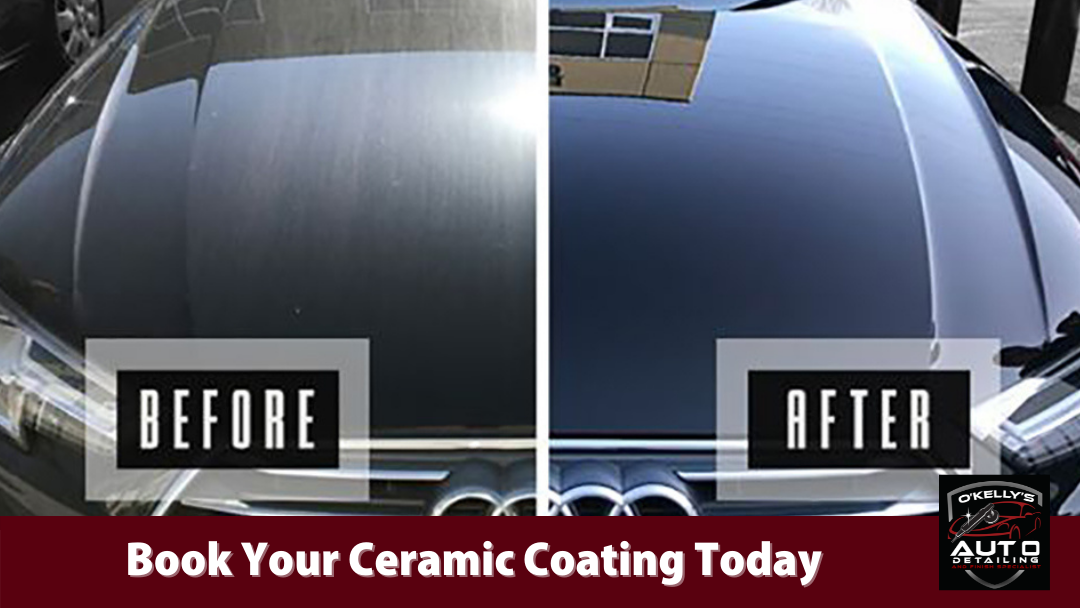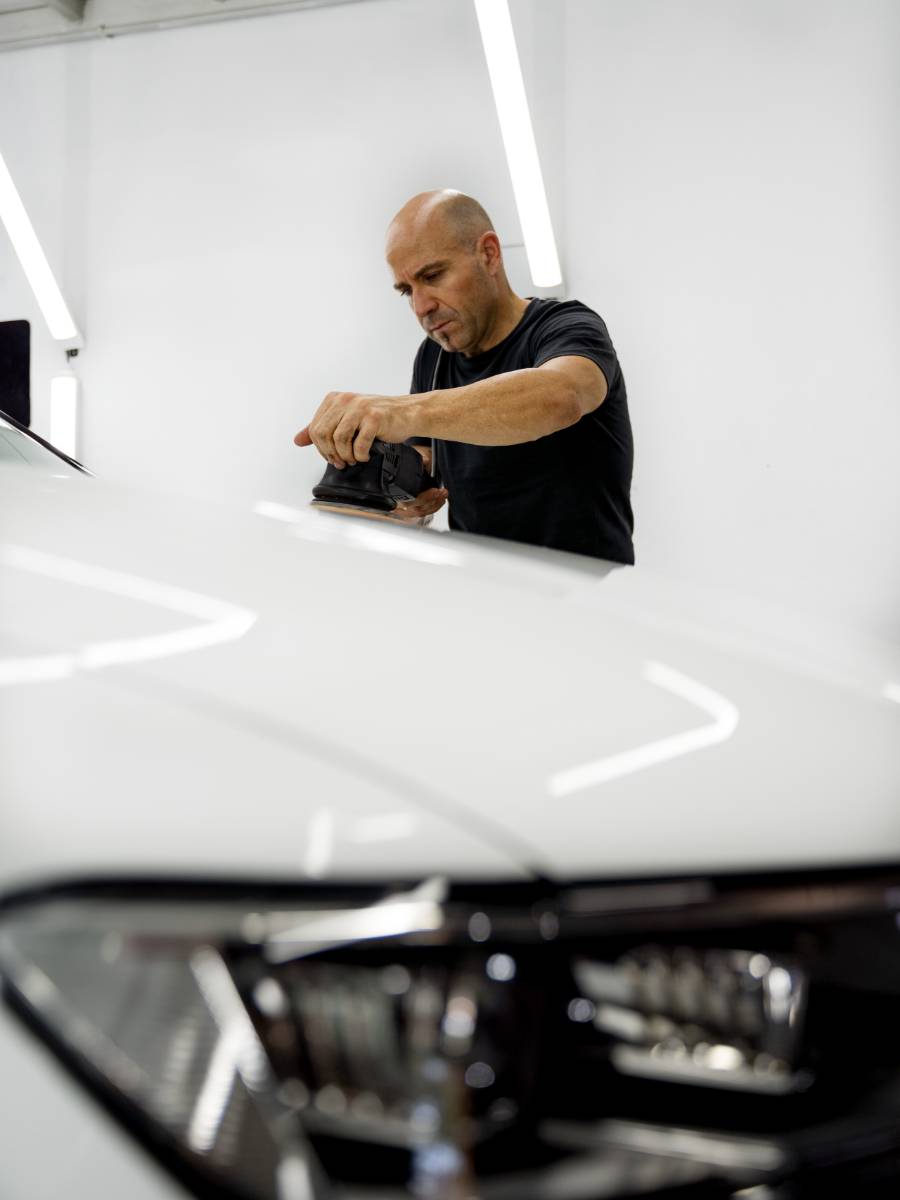Everything You Need to Know About Ceramic Coating for Cars
Everything You Need to Know About Ceramic Coating for Cars
Blog Article
Ceramic Covering vs. Typical Wax: Which Supplies Better Long-Term Protection?
The debate in between ceramic finishes and standard wax for vehicle protection has actually gathered significant focus amongst auto lovers and experts alike. Ceramic coverings boast superior long life and resistance to environmental aspects, yet the complexity of their application increases concerns about access and functionality.
Overview of Ceramic Coating
Ceramic finish has actually gained substantial popularity among vehicle enthusiasts and detailers alike as a result of its sophisticated safety qualities. This ingenious modern technology is developed to produce a long lasting, hydrophobic shield over an automobile's paint surface, dramatically improving its resistance to environmental impurities such as dirt, UV rays, and chemical discolorations. Unlike standard wax, which offers a short-lived layer of security, ceramic finishes bond at a molecular degree with the paint, providing durable longevity-- commonly extending beyond two years with proper upkeep.
The application process includes careful prep work of the vehicle's surface area, consisting of cleansing and polishing to guarantee ideal attachment. Once applied, the finish remedies to develop a durable layer that not just includes deepness and gloss to the paint however also streamlines maintenance. With its hydrophobic homes, ceramic layer allows water and dirt to glide off even more easily, decreasing the frequency of washes and reducing the danger of swirl marks.
In addition, ceramic coatings are available in various formulas, enabling users to pick items customized to their certain requirements and choices. On the whole, ceramic layer stands for a substantial improvement in paint defense modern technology, supplying remarkable efficiency compared to standard alternatives.
Review of Standard Wax
Commonly considered a staple in auto treatment, wax acts as a preferred choice for those looking for an uncomplicated technique to enhance and secure their car's paint - ceramic coating. Automotive wax usually comprises natural active ingredients, such as carnauba, or synthetic compounds, designed to create a protective layer on the surface area of the paint. This layer not only enhances the car's gloss and shine but likewise provides a barrier against ecological impurities
The application of wax is normally user-friendly, making it available for both professionals and do it yourself enthusiasts. It can be used by hand or device, allowing for convenience in the outlining procedure. When used, wax needs a curing period, after which it sets to create a protective covering. Wax is additionally recognized for its capacity to drive away water, promoting a beading impact that helps in the prevention of water places and rust.
However, while wax works for improving the aesthetic charm of an automobile, it is vital to note that the security it supplies might demand much more constant reapplication compared to alternate items, such as ceramic coatings. Generally, typical wax continues to be a favored alternative for those focusing on ease of use and prompt aesthetic renovation.
Resilience and Durability Contrast
While both ceramic layers and conventional wax offer safety advantages for vehicle paint, their resilience and long life differ dramatically. Conventional wax, commonly ceramic coating made from natural carnauba or synthetic polymers, normally provides a safety layer that lasts about 3 to six months. This reasonably brief life expectancy requires regular reapplication to preserve optimal protection.
On the other hand, ceramic coverings are engineered from sophisticated nanotechnology, forming a covalent bond with the paint surface. This causes a durable, hydrophobic layer that can sustain for 2 to five years, depending upon the item and environmental conditions. The premium durability of ceramic layers is associated to their chemical structure, which supplies boosted resistance to scrapes, UV rays, and oxidation.

Security Versus Ecological Factors
Shielding a car's paint from ecological elements is important for keeping its appearance and worth gradually. Cars are frequently subjected to a selection of components, including UV rays, bird droppings, tree sap, acid rain, and roadway gunk, every one of which can compromise the stability of the paintwork.
Ceramic layers offer a durable protection against these environmental assailants. Unlike conventional wax, which can break down quickly under UV direct exposure, ceramic coatings develop a long lasting, hydrophobic layer that resists the damaging effects More Bonuses of sunshine and ecological toxins. This advanced modern technology develops a chemical bond with the automobile's surface, providing superior defense that lasts for years, even in extreme conditions.
In comparison, ceramic finishings preserve their protective high qualities much longer, substantially minimizing the risk of paint damage and making certain that the automobile preserves its aesthetic appeal. As a result, ceramic finishes are progressively recognized as the superior selection for long-term security against ecological aspects.
Application and Upkeep Differences
The methods of application and subsequent upkeep for ceramic finishes and traditional wax vary significantly, affecting the total user experience and efficiency of each item. Ceramic coverings call for an even more elaborate application process, normally including surface area preparation that includes cleaning, sanitizing, and polishing the car. As soon as the surface is prepared, the ceramic finishing is used in a regulated atmosphere, often needing professional experience to ensure appropriate treating and bonding to the paint.

While both products boost automobile look, the longer-lasting security used by ceramic coatings might warrant their first financial investment, regardless of the more demanding application procedure. Alternatively, traditional wax remains a popular option for those seeking an easier, albeit short-term, option.

Verdict
In conclusion, ceramic finishes demonstrate substantial benefits over typical wax in regards to durability and ecological protection. With a lifespan extending 2 to 5 years and superior resistance to UV rays, dust, and chemical spots, ceramic layers supply an extra efficient solution for long-term automobile upkeep. The application procedure might call for professional experience, the resulting price savings and reduced regularity of reapplication underscore the value click for more of ceramic coatings for those looking for ideal vehicle defense.
The debate between ceramic layers and standard wax for car defense has actually amassed considerable attention among automobile fanatics and specialists alike. Unlike traditional wax, which gives a temporary layer of protection, ceramic coverings bond at a molecular degree with the paint, providing long-lasting longevity-- often prolonging past two years with correct upkeep.
While both ceramic layers and conventional wax deal protective benefits for automobile paint, their sturdiness and long life differ dramatically. For vehicle fanatics seeking long-lasting defense, ceramic finishings offer a compelling advantage over traditional wax products.
In final thought, ceramic coatings demonstrate considerable advantages over conventional wax in terms of longevity and environmental protection.
Report this page